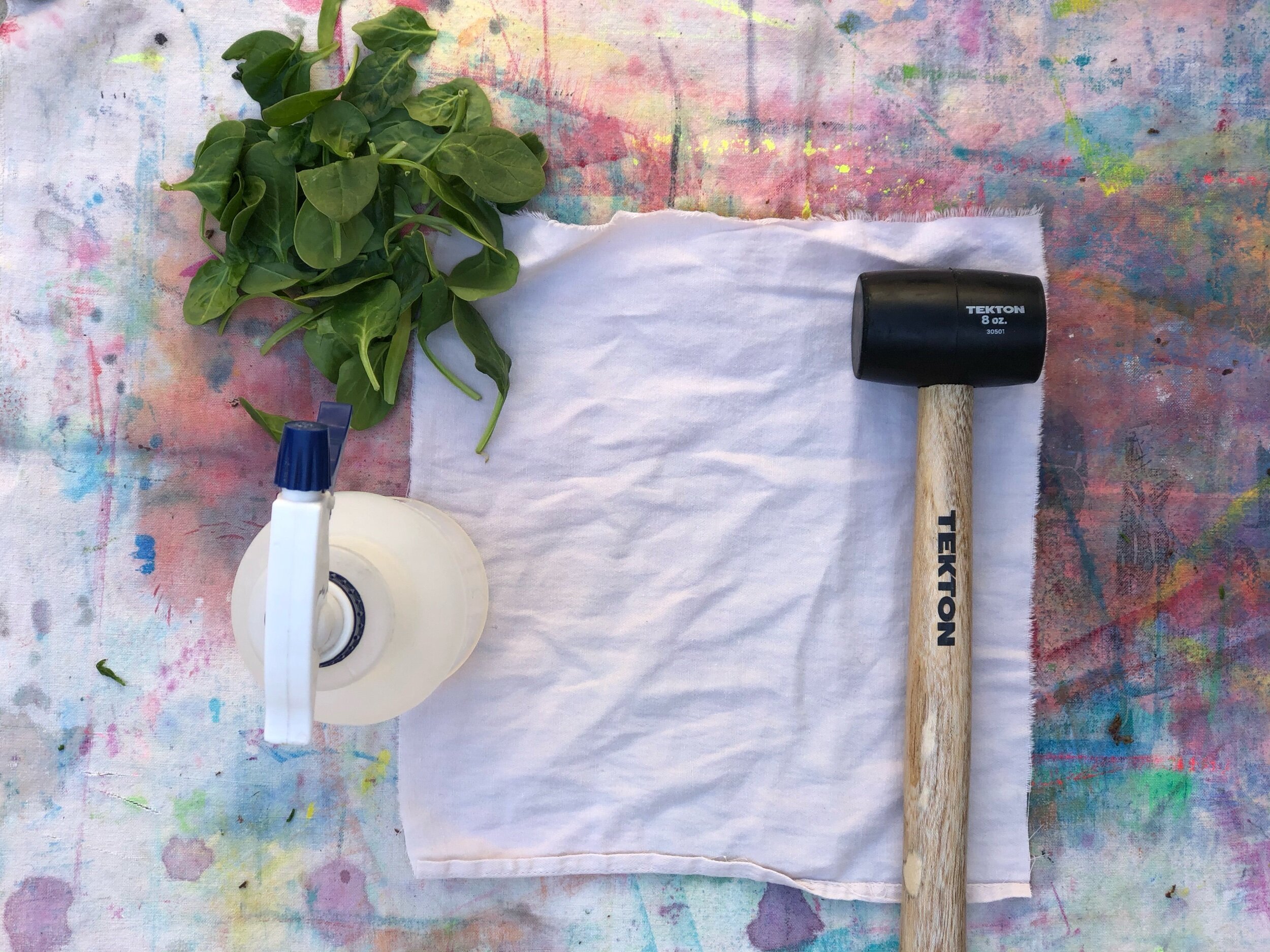Celebrating Spring with Tataki Zomé
Tataki Zomé, meaning “pounded leaves,” is the Japanese art of pounding fresh plant parts into cloth or paper. The result is a direct stamp made with the natural pigments of the leaves and flowers. According to some, the practice of pounding plants into fiber to infuse them with color has been around since Neolithic times.
We love this method because it is tactile and stimulating to so many senses: sight, smell, touch, sound. Students of all ages love it every time.
We celebrated the coming of Spring this week in our at home classes with a plant forage and tataki zomé project.
Through this project, we also teach ecological literacy around:
the positive impact of plant dyes to keep water clean
sustainable harvesting practices
and re-using waste material, like the droopy spinach shown in these photos.
What you need: a piece of natural fiber cloth dampened with 1 part vinegar to 3 parts water, a mallet or rock, some juicy plant material.
1. Arrange the plant parts on half of the fabric piece.
2. Fold it in half.
3. Pound it until you see the pigment coming through the fabric.
4. Unfold, brush off plant parts, and iron on medium to set color.





